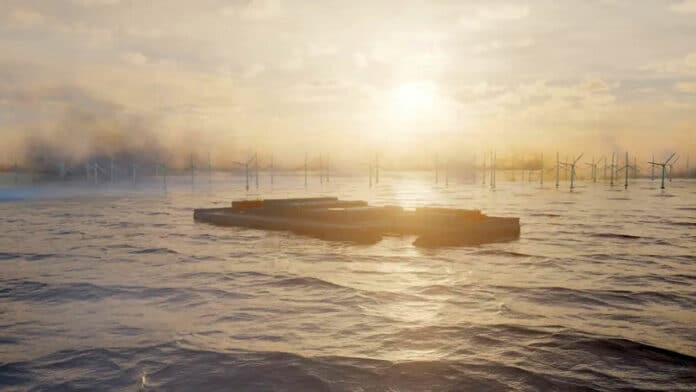A team of 300 staff have been working hard every day since September 2023 at a construction site in Flushing, the Netherlands. They are building caissons, which are watertight structures that take three months each to construct. These structures are an important component for building Princess Elisabeth Island, the world’s first artificial energy island.
Many countries focus on renewable energy solutions, such as wind and solar energy, as they phase out their dependence on fossil fuels. With access to the North Sea, countries in Europe are constructing larger wind farms in the cold waters to maximize the energy output from the strong sea winds.
The Princess Elisabeth Island is actually part of a larger offshore renewable energy generation region known as the Princess Elisabeth Zone. This island is situated approximately 28 miles (45 km) away from the Belgian coast and is expected to serve as an artificial energy island to help direct renewable energy produced from nearby wind farms. The project has received a 100 million euro grant from the European Union’s COVID-19 recovery fund to help finance the development of this facility.
With the ability to handle high-voltage energy in both direct current and alternating current, this innovative facility will power the Princess Elisabeth Zone and serve as a prototype for building hybrid interconnectors in the future. Furthermore, it will connect to new and upcoming wind energy farms in the North Sea, making it a crucial part of the sustainable energy infrastructure.
To create the artificial energy islands, engineers will use a staggering 2.3 million cubic meters of sand. Each caisson – the outer walls of the island – will be made of concrete and measure 187 feet (57 m) long, almost 100 feet (30 m) wide, and equally tall. The meticulous production process of each caisson is split into five stages, each taking 20 days to complete and taking approximately three months to construct. The caissons are moved between the different work sites using ‘runners,’ which takes about six hours.
The most impressive construction phase is the second, in which slip forming is used to create the caisson walls for the energy island project. The walls are raised almost four inches per hour, and the process continues for ten days. The runners who move the caissons between different work sites make it possible to complete the process in about six hours.
When a caisson is ready, it is transported to the harbor by a semi-submersible vessel to be placed in the water as temporary storage. Later, it will be moved to its installation site in the North Sea, where construction of the largest energy island is expected to be completed by 2026. After that, the installation of the electrical equipment can begin. The facility is expected to become operational by 2030.
“The North Sea is set to become the powerhouse of our energy independence, and Princess Elisabeth Island will be a crucial part of this process. Belgium has long been a pioneer in offshore wind, and by continuing to innovate, we are further consolidating our position for the future,” said Alexander De Croo, Prime Minister of Belgium. “This gives our Belgian companies more opportunity to do groundbreaking work, both here and abroad, as well as guaranteeing sustainable, competitively priced energy for our citizens and businesses. Once again, we are putting Belgium on the map.”
